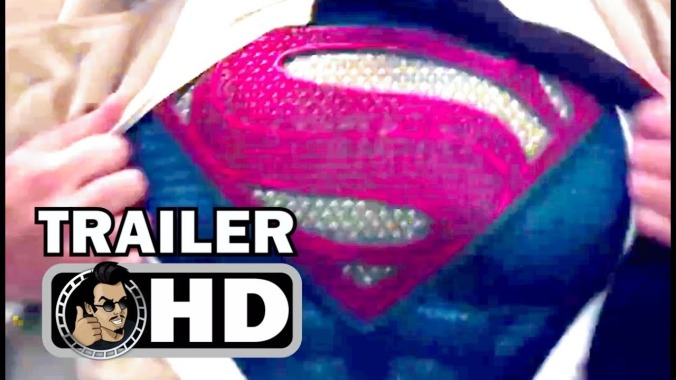The Justice League Blu-ray is a bizarre exercise in hiding the truth about moviemaking

The behind-the-scenes drama that went into Warner Bros.’ tentpole superhero team-up Justice League this past fall ended up being a far more compelling story than the one that played out in front of the cameras. Anyone who was paying attention to the ongoing shakeups, studio meddling, and eventual overhaul of the project bore witness to a messy and semi-public clash of competing visions among the creative minds behind the film and the numerous middle-management folks who seemed hell-bent on retrofitting the blockbuster to be as much like a Marvel movie as possible. So the recent release of the film for the home-video market is mostly noteworthy for being one of the weirder collections of bonus features in recent memory: The entire Blu-ray is a testament to the lengths a studio will go to sweep any hint of controversy under the rug, every featurette the equivalent of someone yelping, “Pay no attention to the man behind the curtain!”
Even a brief summary of the troubled production is enough to highlight how much chaos and tragedy took place throughout the endeavor. It began with the dreadful reception of Batman V Superman: Dawn Of Justice, a film whose merciless critical drubbing and widely scorned bombast (despite ranking among DC’s highest-grossing superhero films) seemed to genuinely take its studio by surprise. The lion’s share of the blame was laid at the feet of director Zack Snyder, whose more-is-more visual aesthetic and dour, unpleasant tone seemed to actively sap any pleasure to be gleaned from the movie. As a result, the backseat driving on his follow-up, Justice League, began in earnest. What previously looked like an open system in which Snyder was allowed to steer the ship creatively for the entire DCEU soon changed. Snyder was reportedly almost fired, but was already so deep in pre-production on Justice League that it was determined keeping him on would be better both cost-wise and in terms of avoiding the bad PR that would result from letting him go. Publicly, Warner Bros. began hedging its bets, even walking back its stated two-picture Justice League deal with Snyder to instead say it would wait and see how the first one went.
The production wasn’t smooth. DC and Snyder (along with his producing partner and spouse Deborah Snyder) started publicly talking about how different Justice League would be from Batman V Superman, essentially a subtle rebuke to their own prior film—not something you tend to do as a filmmaker unless you’ve been ordered to. Other creative forces, including Ben Affleck, were brought on board as executive producers to help reshape the film into a more appealing narrative. A bevy of journalists were brought onset mere weeks into shooting for Snyder to basically offer a mea culpa and swear he’d do better. This time, the message was, things would be fun.
Tragedy struck in early 2017, when Snyder’s 20-year-old daughter, Autumn, committed suicide. The director and studio issued a statement announcing he was leaving the project to focus on time with his family. Avengers director Joss Whedon was brought in, initially to write a few extra scenes following a rough cut of the film, but was subsequently asked to “complete Snyder’s post-production work and film some extra footage,” as was said at the time. Some “extra footage” turned into a massive reworking of the entire film, with Whedon eventually sharing screenwriting credit for the movie, although Snyder retains the sole directing credit. Recently, new reports have suggested Snyder really was fired, months before he publicly stepped away, which would imply Whedon’s role in the whole production is even larger than previously suspected.

 Keep scrolling for more great stories from A.V. Club.
Keep scrolling for more great stories from A.V. Club.